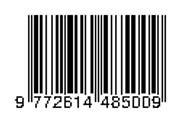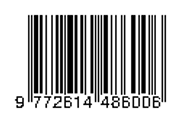Mobile Augmented Reality in Education : Recognition of Electronic Component / classroom learning technology / practical learning technology
DOI:
https://doi.org/10.26905/jeemecs.v7i1.10167Keywords:
Augmented Reality, Learning Technology, Electronic ComponentsAbstract
The introduction of components in the control system practicum utilizes Augmented Reality using cellular so that students know the types of PLC components that are displayed on cellular screens (smartphones). In this case a combination of real world objects such as PLC (Programable Logic Control) components and virtual objects in the form of text, animation, 3D models or computer-generated videos that will be displayed on smartphone screens so that students feel virtual objects in the practicum room. The test results from the detection of the electronic component objects tested included testing the distance, light intensity and covering some objects, the results of the analysis were almost entirely successful in detecting the object. Except in the dark light detection condition, the intensity cannot be determined. This is because, in a marker-based tracking method, identifying the marker pattern is the most important point. In dark conditions, the pattern obtained will be less than optimal so that in the matching process there will be marker errors, or even objects not identified as in the current experimentDownloads
References
Dudhat, Amitkumar, et al. "Blockchain in Indonesia University: A Design Viewboard of Digital Technology Education." Aptisi Transactions on Technopreneurship (ATT) 3.1 (2021): 68-80.
Nikou, Shahrokh, and Milla Aavakare. "An assessment of the interplay between literacy and digital technology in higher education." Education and Information Technologies 26.4 (2021): 3893-3915.
Singh, Mayengbam Nandakishwor. "Inroad of digital technology in education: Age of digital classroom." Higher Education for the Future 8.1 (2021): 20-30.
Gallou, Eirini, and Peter Abrahams. "Creating space for active learning.(Opportunities from) using technology in research-based education." Shaping Higher Education with Students: Ways to Connect Research and Teaching (2018): 165-175.
Chen, Y. C. (2019). Effect of Mobile Augmented Reality on Learning Performance, Motivation, and Math Anxiety in a Math Course. Journal of Educational Computing Research, 57(7), 1695–1722. https://doi.org/10.1177/0735633119854036.
Estapa, A., & Nadolny, L. (2015). The Effect of an Augmented Reality Enhanced Mathematics Lesson on Student Achievement and Motivation. Journal of STEM Education, 16(3), 40–49.
Parekh, Pranav, et al. "Systematic review and meta-analysis of augmented reality in medicine, retail, and games." Visual computing for industry, biomedicine, and art 3.1 (2020): 1-20.
Garzón, Juan. "An Overview of Twenty-Five Years of Augmented Reality in Education." Multimodal Technologies and Interaction 5.7 (2021): 37.
Lester, Stan, and Jens Hofmann. "Some pedagogical observations on using augmented reality in a vocational practicum." British Journal of Educational Technology 51.3 (2020): 645-656.
Soh Khim Ong, and Andrew Yeh Ching Nee. "Enhancing mechanisms education through interaction with augmented reality simulation." Computer Applications in Engineering Education 26.5 (2018): 1552-1564.
Toledo-Morales, Purificacion, and Jose Manuel Sanchez-Garcia. "Use of augmented reality in social sciences as educational resource." Turkish Online Journal of Distance Education 19.3 (2018): 38-52.
Aljuhani, Khulood, et al. "Creating a Virtual Science Lab (VSL): the adoption of virtual labs in Saudi schools." Smart Learning Environments 5.1 (2018): 1-13.
Sudarto, Gitut, and Minar Titis Santoso. "Development of the Omron CP1E PLC to Support PLC Practicum Activities in the Control System Engineering Laboratory." International Joint Conference on Science and Engineering 2021 (IJCSE 2021). Atlantis Press, 2021.
Rusimamto, Puput Wanarti, et al. "Fluid Mixing Process Based on Programmable Logic Controller as Training Kit for Electrical Engineering Education Students." International Journal of Integrated Engineering 13.4 (2021): 104-111.
Phade, Gayatri, et al. "A novel ICT tool for interactive learning for electronics engineering based on augmented reality." International Journal of Scientific & Technology Research 8.08 (2019).
Downloads
Published
Issue
Section
License
Our ethic statements are based on COPE’s Best Practice Guidelines for Journal Editors.
Publication decisions
The editor is responsible for deciding which of the articles submitted to the journal should be published.
The editor may be guided by the policies of the journal's editorial board and constrained by such legal requirements as shall then be in force regarding libel, copyright infringement and plagiarism. The editor may confer with other editors or reviewers in making this decision.
Fair play
An editor at any time evaluate manuscripts for their intellectual content without regard to race, gender, sexual orientation, religious belief, ethnic origin, citizenship, or political philosophy of the authors.
Confidentiality
The editor and any editorial staff must not disclose any information about a submitted manuscript to anyone other than the corresponding author, reviewers, potential reviewers, other editorial advisers, and the publisher, as appropriate.
Disclosure and conflicts of interest
Unpublished materials disclosed in a submitted manuscript must not be used in an editor's own research without the express written consent of the author.
Duties of Reviewers
Contribution to Editorial Decisions
Peer review assists the editor in making editorial decisions and through the editorial communications with the author may also assist the author in improving the paper.
Promptness
Any selected referee who feels unqualified to review the research reported in a manuscript or knows that its prompt review will be impossible should notify the editor and excuse himself from the review process.
Confidentiality
Any manuscripts received for review must be treated as confidential documents. They must not be shown to or discussed with others except as authorized by the editor.
Standards of Objectivity
Reviews should be conducted objectively. Personal criticism of the author is inappropriate. Referees should express their views clearly with supporting arguments.
Acknowledgement of Sources
Reviewers should identify relevant published work that has not been cited by the authors. Any statement that an observation, derivation, or argument had been previously reported should be accompanied by the relevant citation. A reviewer should also call to the editor's attention any substantial similarity or overlap between the manuscript under consideration and any other published paper of which they have personal knowledge.
Disclosure and Conflict of Interest
Privileged information or ideas obtained through peer review must be kept confidential and not used for personal advantage. Reviewers should not consider manuscripts in which they have conflicts of interest resulting from competitive, collaborative, or other relationships or connections with any of the authors, companies, or institutions connected to the papers.
Duties of Authors
Reporting standards
Authors of reports of original research should present an accurate account of the work performed as well as an objective discussion of its significance. Underlying data should be represented accurately in the paper. A paper should contain sufficient detail and references to permit others to replicate the work. Fraudulent or knowingly inaccurate statements constitute unethical behavior and are unacceptable.
Originality and Plagiarism
The authors should ensure that they have written entirely original works, and if the authors have used the work and/or words of others that this has been appropriately cited or quoted.
Multiple, Redundant or Concurrent Publication
An author should not in general publish manuscripts describing essentially the same research in more than one journal or primary publication. Submitting the same manuscript to more than one journal concurrently constitutes unethical publishing behaviour and is unacceptable.
Acknowledgement of Sources
Proper acknowledgment of the work of others must always be given. Authors should cite publications that have been influential in determining the nature of the reported work.
Authorship of the Paper
Authorship should be limited to those who have made a significant contribution to the conception, design, execution, or interpretation of the reported study. All those who have made significant contributions should be listed as co-authors. Where there are others who have participated in certain substantive aspects of the research project, they should be acknowledged or listed as contributors.
The corresponding author should ensure that all appropriate co-authors and no inappropriate co-authors are included on the paper, and that all co-authors have seen and approved the final version of the paper and have agreed to its submission for publication.
Disclosure and Conflicts of Interest
All authors should disclose in their manuscript any financial or other substantive conflict of interest that might be construed to influence the results or interpretation of their manuscript. All sources of financial support for the project should be disclosed.
Fundamental errors in published works
When an author discovers a significant error or inaccuracy in his/her own published work, it is the author’s obligation to promptly notify the journal editor or publisher and cooperate with the editor to retract or correct the paper.










